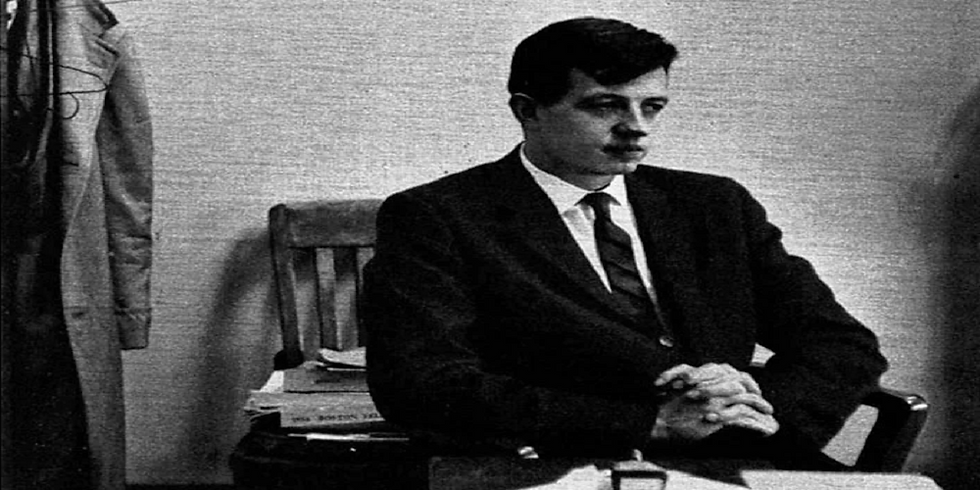Delving Into Getting To Yes: An Introductory Guide to the Bestselling Memoir
- bookeygetbooks
- May 5, 2023
- 4 min read

Chapter 1 A Reflective Review and Summary of Getting To Yes
Getting to Yes: Negotiating Agreement Without Giving In is a classic guide to the art of negotiation. The book presents a principled approach to negotiating that focuses on separating people from the problem, focusing on interests not positions, generating options for mutual gain, and using objective criteria to evaluate proposals.
The authors provide numerous examples of successful negotiations to illustrate how their principles can be applied in practice. They also discuss common pitfalls to avoid, such as becoming stuck in fixed positions or making unilateral concessions.
What makes Getting to Yes particularly insightful is its emphasis on creating value for both parties. The authors argue that by working collaboratively, negotiators can achieve outcomes that are better than what they could have achieved by pursuing their own interests alone.
Overall, Getting to Yes is an indispensable resource for anyone seeking to improve their negotiation skills. The book's clear and concise framework, combined with its practical advice and illustrative examples, make it a highly valuable resource for negotiators in any setting.
Chapter 2 The Visionary Storyteller: Exploring the Author of Getting To Yes
Getting to Yes was co-written by Roger Fisher and William Ury, two negotiation experts who were affiliated with Harvard Law School. The book presents a principled approach to negotiating that emphasizes creating value for both parties by focusing on interests, not positions.
Fisher and Ury's philosophy has had a profound impact on the field of negotiation and dispute resolution. Their work has influenced practitioners in diverse fields, including business, politics, and international diplomacy.
In addition to Getting to Yes, Fisher and Ury have written several other books on negotiation and conflict resolution. Their contributions to the field have been recognized worldwide, with Fisher receiving numerous awards for his work, including the Great Negotiator Award from the Program on Negotiation at Harvard Law School.
Overall, Fisher and Ury's collaboration on Getting to Yes represents a seminal contribution to the study and practice of negotiation. Their principles and techniques have stood the test of time and remain relevant to negotiators today.
Chapter 3 Chapter Analysis: A Thorough Summary of Getting To Yes
Chapter 1: The Problem of Negotiation - This chapter introduces the problem of positional bargaining and explains how it can lead to suboptimal outcomes.
Chapter 2: The Four Principles - Chapter 2 outlines the four principles of principled negotiation, including separating people from the problem, focusing on interests not positions, generating options for mutual gain, and using objective criteria to evaluate proposals.
Chapter 3: Generating Options - This chapter explores the process of generating options for mutual gain, including brainstorming and considering multiple scenarios.
Chapter 4: Communication Skills - Chapter 4 focuses on effective communication skills in negotiation, including active listening, asking questions, and conveying information effectively.
Chapter 5: Overcoming Challenges - The final chapter provides advice on overcoming common challenges in negotiation, such as dealing with difficult negotiators or navigating cultural differences. It also summarizes the key takeaways from the book and offers tips for applying the principles of principled negotiation in practice.
Chapter 4 Uncovering Insights: Notes and Observations from Getting To Yes Audio Book
Note 1: The audiobook introduces the problem of positional bargaining, which occurs when two parties take fixed positions and refuse to budge. This can lead to unsatisfactory outcomes for both parties.
Note 2: The four principles of principled negotiation - separating people from the problem, focusing on interests not positions, generating options for mutual gain, and using objective criteria to evaluate proposals - are discussed in detail in the audiobook.
Note 3: The process of brainstorming options for mutual gain is explored in depth, including techniques for generating creative solutions to complex problems.
Note 4: Effective communication skills are emphasized throughout the audiobook, with guidance on active listening, asking questions, and conveying information effectively.
Note 5: The audiobook provides practical examples of the principles of principled negotiation in action, from business deals to international diplomacy.
Chapter 5 Discovering the Best Quotes from Getting To Yes
Quote 1: "Negotiation is about understanding the other person's perspective and using that knowledge to achieve a mutually satisfactory outcome." - Daniel Shapiro
Quote 2: "Successful negotiation involves finding a way to meet the other party's needs while still achieving your own objectives." - Herb Cohen
Quote 3: "The hardest thing in any negotiation is making the first concession." - William Ury
Quote 4: "The best way to get what you want is to help others get what they want." - Zig Ziglar
Quote 5: "In negotiation, the most powerful tool is the ability to listen actively and use that information to your advantage." - Tony Robbins
Chapter 6 Exploring All Aspects: A Complete PDF Summary of the Memoir Getting To Yes
The Getting to Yes PDF is a comprehensive summary of the principles of principled negotiation, which offers an alternative approach to traditional positional bargaining. The book emphasizes separating people from the problem, focusing on interests not positions, generating options for mutual gain, and using objective criteria to evaluate proposals. The PDF provides practical guidance on how to apply these principles in everyday life, offering tips for effective communication, creative brainstorming, and overcoming common obstacles to successful negotiation.
The PDF includes numerous real-world examples of the principles of principled negotiation in action, demonstrating how they can be applied in a variety of settings, from business deals to international diplomacy. The PDF also stresses the importance of active listening, asking questions, and conveying information effectively in negotiations, as well as the power of finding common ground and building rapport with the other party. Overall, the Getting to Yes PDF is a valuable resource for anyone looking to improve their negotiating skills and achieve more satisfactory outcomes in their professional and personal lives.
Chapter 7 Empowering Tales: Books that Complement Getting To Yes
Book 1: "Getting More: How You Can Negotiate to Succeed in Work and Life" by Stuart Diamond
Book 2: "Influence: The Psychology of Persuasion" by Robert Cialdini
Book 3: "Negotiating the Nonnegotiable: How to Resolve Your Most Emotionally Charged Conflicts" by Daniel Shapiro
Book 4: "The Five Dysfunctions of a Team: A Leadership Fable" by Patrick Lencioni
Book 5: "Start with No: The Negotiating Tools that the Pros Don't Want You to Know" by Jim Camp


















Comments